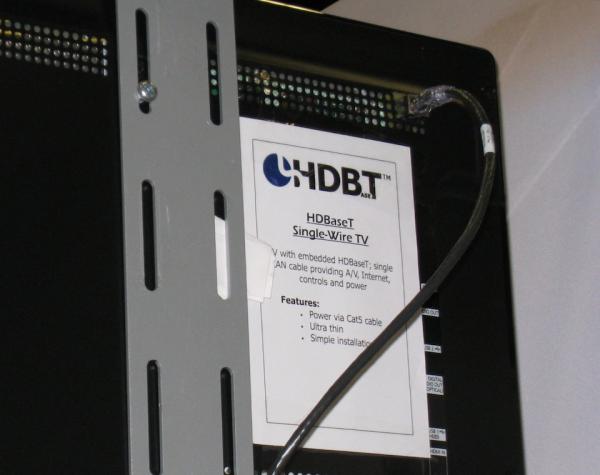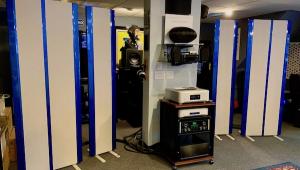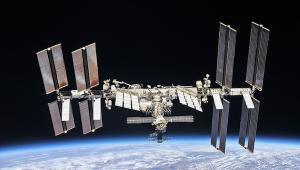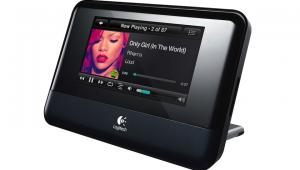HDBaseT: A One-Wire World

As an A/V connection standard, HDMI has its downsides: limited cable length, glitches, slow switching, and version upgrades that make new gear incompatible with old stuff — the list goes on. But a major upside is that one interconnect can handle the jobs previously carried out by a thick wad of cables. In its most current version, HDMI 1.4, a single link will convey high-def video/multichannel audio, link devices to a local network (HDMI Ethernet Channel), and route audio signals from a TV back out to an A/V receiver (Audio Return Channel). Sweet!
But any TV making the hook-up also needs to be plugged into a power socket. That means an additional wire, plus the logistical problem of locating a TV near an AC outlet — or, for a wall-mounted installation, of embedding one within the wall (a task that generally requires the services of an electrician). Wouldn’t it be great if HDMI also carried power?
HDMI can’t. But HDBaseT can.
Okay, I hear you moaning that a new interconnect standard is coming to displace HDMI and make your current gear obsolete. But that’s not the case here. Let’s take a closer look at this thing called HDBaseT and see what is going on.
According to the HDBaseT Alliance’s Website (the group lists LG, Samsung, Sony Pictures, Valens Semiconductor, and a bunch of other companies as members), “HDBaseT is a consumer electronics connectivity technology optimized for whole-home and commercial multimedia distribution.” In this case, “technology” doesn’t equal “standard”; rather, HDBaseT, which incorporates HDMI chips at the transmitter and receiver points, extends the range of things HDMI already does quite well.
At the recent CEDIA show in Indianapolis, reps in the Alliance’s booth were demoing the "5Play" feature set at the core of the HDBaseT 1.0 specification:
• Video (uncompressed up to 10.2 Gbps with support for 3D and 4K)
• Audio: (all standard formats including 7.1 channel Dolby TrueHD and DTS-HD Master Audio)
• Ethernet (100 Mbps)
• Control (CEC, RS232, IR, and USB)
• Power (up to 100 watts)
Connections in an HDBaseT hookup are made using Cat5e/6 cables with standard RJ-45 terminations — the same cheap blue ones that you use to connect your computer to your modem/router. Cable lengths of up to 100 meters are supported, although additional 100-meter runs (up to 8) can be used to extend the network.
While much has been made of HDBaseT’s ability to convey power signals, the spec’s 100-watt limit means that only TVs with a screen size smaller than 40 inches are supported. Needless to say, we’re talking bedroom and kitchen sets here; a 37-inch screen is hardly sufficient for home theater. However, compliance of TV makers with future versions of the EnergyStar specification should mean that larger screens (around 50 inches) would be able to squeak in under that 100-watt threshold.
With its ability to link up multiple sources and HD displays via long Cat5e/6 cable runs, HDBaseT is a natural fit for the custom installation market. Not surprisingly, HDBaseT extender kits were on display at CEDIA from several A/V switcher and cable manufacturers including Gefen, Atlona, Accell, and Kordz. Such kits, which consist of transmitter and receiver modules with HDMI, LAN, and RS-232/IR connections, sell for anywhere from $500 to $1,000.
But I wouldn’t count on HDBaseT remaining locked up in the custom world for long — it’s too cool for that. Also on display at the Alliance’s CEDIA booth was a Sony A/V receiver with an integrated HDBaseT transmitter. This prototype was sending high-def video, audio, and power over a single Cat6 cable to a Samsung LCD TV. When checking it out, I found myself swarmed by a group of engineers from Pioneer Electronics who had come to grill the HDBaseT folks —an encouraging sign that the tech will eventually migrate into future A/V receivers.



















































